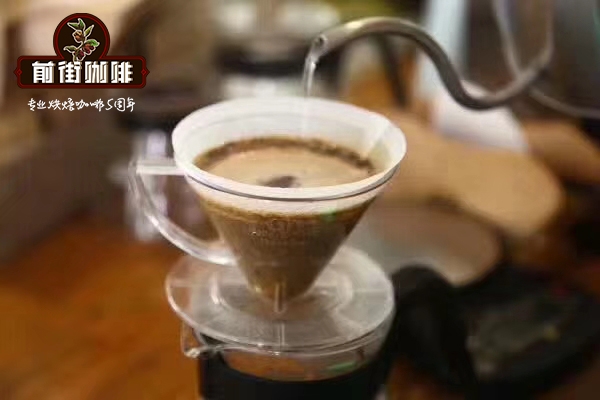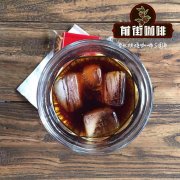Indonesian East Java Coffee| Java Smallholder Garden| wet planing

Professional coffee knowledge exchange more coffee bean information please follow the coffee workshop (Wechat official account cafe_style)
East Java-small Farmer Garden
Variety: S795 (Typica hybrid arabica) Tibica-hybrid Arabica
Producer: independent coffee farmers in East Java
Altitude: 900-1600m
Treatment method: wet planing method
Most of the Java coffee is controlled by the Indonesian government, and this Java coffee comes from independent coffee farmers in East Java.
Java has been growing coffee since the late 17th century. In low-altitude areas, deciduous disease hit Java coffee in the 19th century, which greatly affected its yield and quality.
The good fortune in disguise has driven coffee farmers to grow coffee at high altitude. the quality of coffee has been greatly improved by fertile volcanic soil and high altitude.
Although the Indonesian government controls the production of most Java coffee, it promotes the cultivation of a single variety of coffee.
But there are some independent coffee farmers in Ijen Plateau region of East Java who grow different varieties mainly S795 in this area.
Avocado, paulownia, acacia, Leucaena leucocephala and other trees were also planted as shade trees.
Flavor description: smooth and mellow taste, herbal, ginseng, smoked black plum and tropical fruit flavor
Indonesia's unique treatment-wet planing method, the thick and thick taste is loved by the Chinese people.
East Java Province, first-level administrative district of Indonesia. It is mainly composed of the eastern part of Java and Madura Island, facing the Java Sea to the north, the Indian Ocean to the south, and the Madura Strait and the Bali Sea to the east. Surabaya, the provincial capital.
East Java covers an area of 47927 square kilometers. There are 10 volcanoes (including some active volcanoes) and 3.5 million acres of forest (of which about 2 million acres of forest can be used commercially). The population is 35 million, accounting for 18% of the country's population. Of these, 28% live in cities and 94% are Muslim.
The east-west volcanic chain is partial to the southern part of the island. Mount Mohomeru of Mount Semeru is 3676 meters above sea level, the highest peak on the island. The intermountain basin is interlaced with the plateau, with limestone platform along the north and south coast, and limestone platform extending to Madura Island in the north.
East Java has a tropical climate. The annual average temperature is between 28 degrees Celsius and 30 degrees Celsius. The rainy season is from November to March of the following year.
The main commodities available for export in East Java are wood products, paper products, textiles, frozen sea shrimp, sports shoes, household goods, rattan products, leather products, steel products, tobacco and so on. East Java also imports a large amount of all kinds of goods every year.
East Java province is an important agricultural area in Indonesia, and the largest rivers on the island, the Solo and Brantas rivers, flow through the basin. The land in the river basin is rich and beautiful. There are oil deposits in the north and is the main teak forest area of the island. In the inland mountains, there are ebony, catechu, tropical pine, oak, maple and iron wood. Agriculture is developed, rice and coconut are planted in lowland, sugarcane, rubber, coffee, tobacco, cotton and sisal are planted on sloping land, and kapok is planted in highland. Animal husbandry has a certain scale. Industries include textile, food, tobacco, metal processing, machinery, shipbuilding, railway vehicles, rubber, paper and so on. It covers an area of 47, 922 square kilometers and a population of 32.504 million (1990), including the nearby Baveon Island and the Conan Islands.
East Java province currently has more than 130 banks of various types, including 10 foreign banks, including Citibank in the United States. East Java opened its stock trading business in 1989.
Surabaya is the capital and economic center of East Java province, with a population of 1 million. Founded in 1293, Surabaya is the oldest city and the earliest industrial town in Indonesia. Marang is the second largest city in East Java, located in the mountains south of Surabaya, with a population of 650000.
Surabaya Port is the second largest port in the country and the shipping center in western Indonesia. The city has the largest PT shipyard in Indonesia. The international airport in Surabaya has hourly flights to Jakarta and international flights to cities in Singapore, Guangzhou, Colombo and Australia.
Qianjie coffee: Guangzhou bakery, the store is small but a variety of beans, you can find a variety of unknown beans, but also provide online store services. Https://shop104210103.taobao.com
Important Notice :
前街咖啡 FrontStreet Coffee has moved to new addredd:
FrontStreet Coffee Address: 315,Donghua East Road,GuangZhou
Tel:020 38364473
- Prev

Ethiopian Tomoca Coffee Brand introduction _ TOMOCA Coffee beans / Powder how to drink
Professional coffee knowledge exchange more coffee bean information Please pay attention to coffee workshop (Wechat official account cafe_style) mention coffee, cannot but mention Essel, mention Essel's coffee, have to say TOMOCA coffee. Fresh TOMACO coffee beans, cooked beans, harar-long bean baked TOMACO coffee know that this coffee is really authentic. So is TOMACO.
- Next

Indonesian Java Coffee | Brawan Manor Blawan Estate | Water washing | Indonesian State-owned Coffee Manor
Professional coffee knowledge exchange more coffee bean information please follow the coffee workshop (Wechat official account cafe_style) Indonesia Java Province Indonesia Java Blawan Manor washing G1 (Java G1) production area: Java (Java) eastern Ijen volcanic plateau species: Java Java Typica (Java Typica) Manor: Brawan Manor (Blawan Esta)
Related
- Does Rose Summer choose Blue, Green or Red? Detailed explanation of Rose Summer Coffee plots and Classification in Panamanian Jade Manor
- What is the difference between the origin, producing area, processing plant, cooperative and manor of coffee beans?
- How fine does the espresso powder fit? how to grind the espresso?
- Sca coffee roasting degree color card coffee roasting degree 8 roasting color values what do you mean?
- The practice of lattes: how to make lattes at home
- Introduction to Indonesian Fine Coffee beans-- Java Coffee producing area of Indonesian Arabica Coffee
- How much will the flavor of light and medium roasted rose summer be expressed? What baking level is rose summer suitable for?
- Introduction to the characteristics of washing, sun-drying or wet-planing coffee commonly used in Mantenin, Indonesia
- Price characteristics of Arabica Coffee Bean Starbucks introduction to Manning Coffee Bean Taste producing area Variety Manor
- What is the authentic Yega flavor? What are the flavor characteristics of the really excellent Yejasuffi coffee beans?

